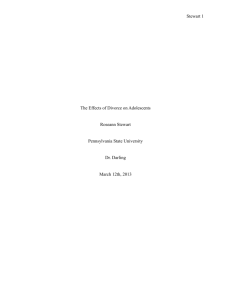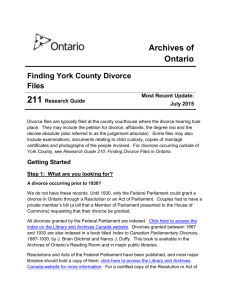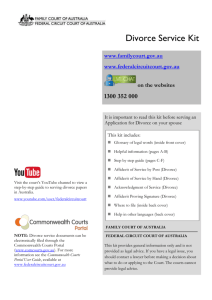CO-PARENTING THROUGH DIVORCE
advertisement
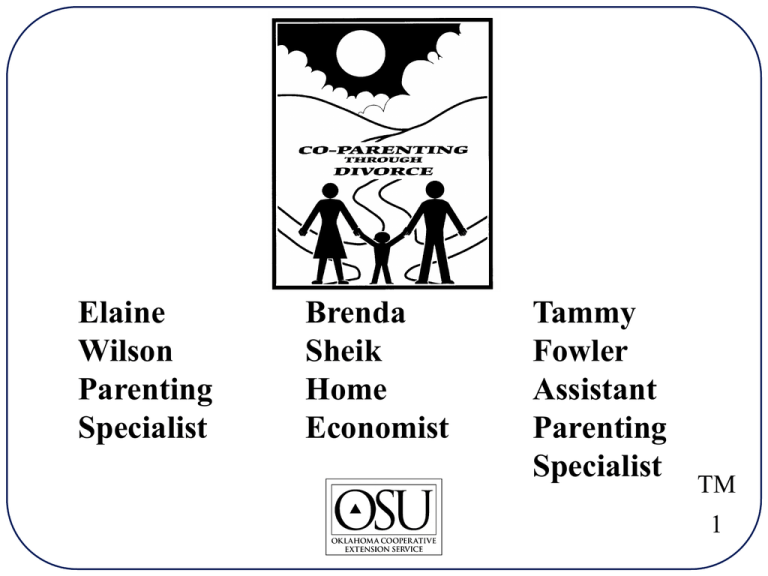
Elaine Wilson Parenting Specialist Brenda Sheik Home Economist Tammy Fowler Assistant Parenting Specialist TM 1 Divorce changes a family. Consider children’s ages and interests when making family decisions. Lifestyle the child experiences. TM 2 The child’s interests determine appropriate: • • • • parenting activities visitation arrangements explanations of divorce family lifestyles TM 3 Co-parenting is lifelong. Stress management techniques strengthens children and the family. Use support services. TM 4 AGENDA 6:30 pm 6:35 pm 6:45 pm 7:00 pm 7:20 pm 7:30 pm 8:00 pm 8:30 pm Registration Introduction Positive Aspects of Divorce Managing Stress Break Development and Divorce Referrals Attendance TM 5 You will learn: how to talk about your family lifestyle how to manage stress wise custody and visitation how to co-parent TM 6 Positive Features of Co-Parenting Families • Fastest growing family type • Strong parent-child relationships • Brothers and sisters close TM 7 Children Learn home management skills to be cautious about marriage self reliance realistic expectations of adults TM 8 Managing Stress • • • • Maintain routines Talk about feelings Delegate Release tension TM 9 Grief • • • • • Denial Anger Bargaining Depression Acceptance TM 10 HELPFUL HINTS FROM RESEARCH TM 11 At all ages children need: Predictable, dependable routines. Attention to abilities and interests. Parents who communicate. Friends for support and relaxation. Help managing fear, stress and anger. Stable adults. Reassurance. TM 12 Stages of Divorce 1. 2. 3. 4. 5. 6. 7. Disillusionment - giving up Erosion - things get worse Detachment - emotional distance Physical Separation - moves out Mourning - grief, sadness Second Adolescence - acting out, wild, crazy Resolution - calm, stable, single person TM 13 Children can feel all of the emotions that adults feel. Abandonment Denial Disappointment Fear Guilt Insecure Rejection Shock Sense of something terrible. TM 14 Explaining divorce to children Goal 1 - Still parents Goal 2 - Mutual decision Goal 3 - Get help Goal 4 - Communicate TM 15 Key Concepts Marriage ends. Parenthood continues. Mutual decision. Brothers and sisters bond. The divorce is permanent. Other people can help us. The divorce was a “grown up” decision. TM 16 Lifelong Process Changing understanding Blame Guilt Responsibility Permanent Accept change TM 17 Infant and Toddler Secure routine Simple explanations Holding and cuddling Basic needs Verbal and physical assurance of love and protection. Set limits and provide consistent follow through. Parent needs to seek support from others. TM 18 Preschooler Tell 1-2 weeks before a change. Parent model. Predictable, stable routine. Make few changes. Introduce necessary changes gradually. TM 19 Preschooler (continued) Give verbal and physical reassurance. Avoid unnecessary separation. Assure child of your return. Read aloud age appropriate books on family. Encourage play. TM 20 School-age Tell as soon as possible. Needs sense of family. Do family projects and activities. Stable school and social activities with parents involved. Reassurance that parents will continue as parents. Be clear that divorce is permanent. Encourage play and exercise. TM 21 Teenage Tell as soon as possible. Allow child time to handle feelings. Structure and routine. Avoid power struggles. Be available. Be clear that divorce is permanent. Encourage physical exercise. Maintain parent role. Maintain adult privacy. TM 22 Arrangements for Being with the Non-custodial Parent Age Location Infant child’s home Min. Freq. Needs 1-4 hrs 2 x’s per wk routine familiar place Toddler outside child’s home 1 day no overnight 1 x per wk favorite objects routine Preschool overnight 1 day 1 week 1 x per wk favorite objects pattern outside child’s home Length TM 23 Age Location Length Min. Freq. Needs Schoolage outside child’s home weekend to 6 wks 1 x per wk belongings in each home parent involved predictable pattern Teenager outside child’s home inside dorm few min. 1 yr or more 1 contact per week peers negotiable activities employment TM 24 Infant • • • • • within child’s home 1-4 hours 2 times each week no overnights regular routine TM 25 Toddler • • • • • • outside child’s home take favorite objects along entire day visit at least once a week no overnights maintain routine TM 26 Preschooler • • • • • outside child’s home take favorite objects along overnight to one week at least one time each week predictable pattern TM 27 School-age • • • • • • • outside child’s home one time each week own belongings in each home overnight to six weeks one time each week predictable pattern parent involvement in activities TM 28 Teenager • outside child’s home or in dorm room or apartment • peer relations, activities, employment, independence, mobility • few minutes to one year or longer • at least weekly contact • negotiable routine TM 29 Developmentally Appropriate Arrangements More visitation is generally better than less. Children adjust better when parents are not hostile. Greater distance requires greater effort. Telephone calls, letter, fax and e:mail supplement time together. Child’s needs take precedence over adults needs. TM 30 OKLAHOMA COOPERATIVE EXTENSION SERVICE TM 31

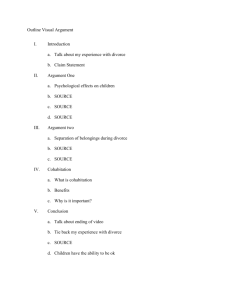


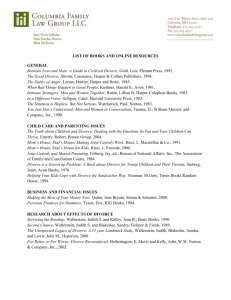
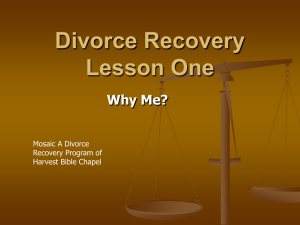



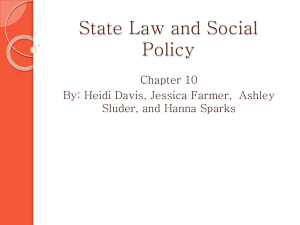



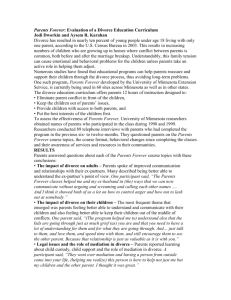

![The_Lucky_One[1] - Chelsea](http://s2.studylib.net/store/data/005765946_1-0e6915fca0964b6f84ddc1f2589bf147-300x300.png)
